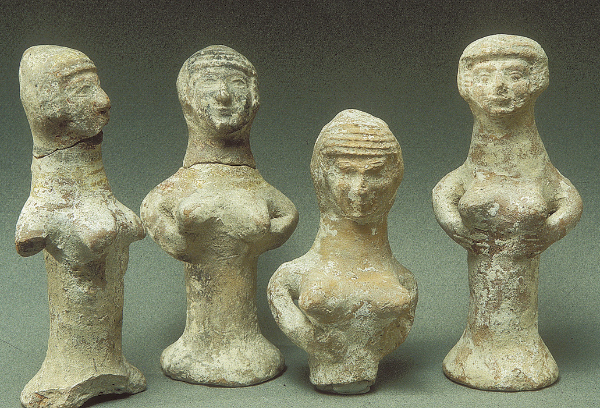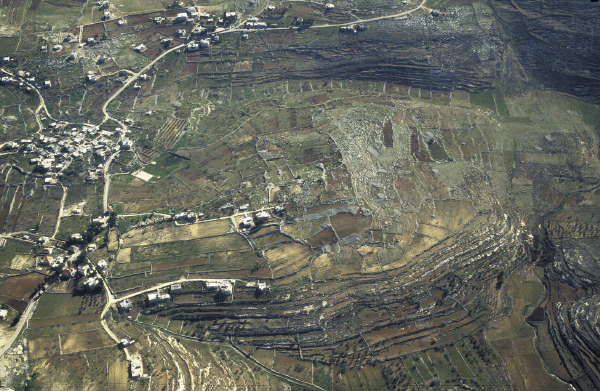Hosea’s Reconciliation with His Wife (3:1–5)
Raisin cakes (3:1). The expression is (lit.) “cakes [?] of grapes.” The meaning “cakes” comes from a tradition reflected in the LXX, but a rabbinic interpretation of the singular form of this word in 2 Samuel 6:19 favors the meaning “jugs.” A possible Arabic cognate for this word (ʾaththa, meaning “be luxuriant, abundant, grow profusely”) suggests a context of opulence or fertility. Biblical contexts for the word (including Song 2:5) affirm a connection with grapes, food offered in a religious setting, and (here) Baal worship.34
Fifteen shekels of silver and about a homer and a lethek of barley (3:2). A shekel was a standard item of currency and weighed about 11.5 grams. A homer was a dry measure of approximately eleven bushels, whereas a lethek, though not well attested, was perhaps half a homer. Hosea’s method of payment involving, in addition to money, barley (which is less valuable than wheat) suggests he is not wealthy.
The Charge against Israel (4:1–19)
Because of this the land mourns (4:3). There is a link here between human sin and the devastation of the environment, but the link is not so much ecological (as we might think with the mention of the death of fish in this verse) as it is moral. Only on this broader understanding can we explain Hosea connecting such things as lying and adultery with the death of fish. One or more of the following likely helps elucidate the cultural background to this link:
• The Bible itself. As Genesis reminds us, human sin, including bloodshed, can pollute the earth to the point where God causes a flood to wash the earth and destroy animals. Thus, to defy God’s ordering of life within one sphere of his creation has repercussions within other spheres. In other words, there is a symbiosis within God’s moral ecosystem that we who live in the wake of the pollution of that ecosystem do not fully understand.
• Canaanite culture. Ugaritic texts illustrate a belief within ancient Near Eastern culture of a connection between the welfare of an important individual such as the king and the welfare of the land (see comment on 2:21). What precipitated El’s order to inspect the land for evidence of a drought was a physical illness on the part of King Kirta. Israelites in Hosea’s day may similarly have considered a link between the moral failures of people like the king, princes, and priests and the various problems that affected the land and its creatures.
• The Egyptian concept of maat. Maat, which roughly combines, or alternates between, the English words “right,” “order,” and “truth,” was believed to be the order established at creation. Maat was expected of the king (whose adherence to it in turn promoted it in the realm) and of everyone else in society. Adherence to maat earned maat as a reward in the hereafter.35
They consult a wooden idol and are answered by a stick of wood (4:12). The idolatrous piece of wood was possibly an Asherah pole (see next entry and cf. Deut. 7:5; 12:3). These wooden poles conveyed the presence of the goddess Asherah, after whom they are named. As elsewhere, these pagan practices became inextricably intertwined with the worship of Yahweh in Samaria and other places in Israel (cf. Deut. 16:21). Dozens of excavations (including not just in Judah) have uncovered small clay, “pillar-type” figurines that may represent Asherah. These figurines, predominant in the eighth century B.C., have a tree trunk-like base out of which emerges at the top the breasts (often exaggerated), arms, and head of a woman.36

Pillar figurines
Z. Radovan/www.BibleLandPictures.com
They sacrifice … under oak, poplar and terebinth, where the shade is pleasant (4:13). Trees were associated not simply with shade, but also with goddesses and sex. Regarding the former, the Taʿanach cult stand (see photo) and a drawing of a tree-like symbol on a wide-spouted pitcher from Lachish illustrate a close relationship between a tree and a goddess. In the case of this ewer from Lachish, the word “goddess” appears in an ancient proto-Canaanite script immediately above the tree symbol. Indeed, the word for goddess in Hebrew (ʾlh) is identical in form (and thus potentially alludes) to the word for terebinth (ʾēlâ) here.37

Lachish ewer
Z. Radovan/www.BibleLandPictures.com
Regarding sex, the bottom tier of the Taʿanach cult stand depicts not just a goddess in association with the sacred tree, but a nude goddess whose vagina is clear despite the lack of detail elsewhere. The sexual aspect of this female figure corroborates well with several biblical passages that refer to sexual activity in association with a sacred grove or garden (e.g., Isa. 57:5; Jer. 2:20; 3:6).38 Sexual acts involving fertility are suggested by the reference to there being “not increase” in relation to prostitution in Hosea 4:10. (Here the biblical text provides background information, mostly lacking elsewhere, to affirm a connection between temple prostitution and fertility.) The type of trees mentioned here supports a fertility link; all are deciduous, with leaves budding even in the summer when it is dry and hot, making them a logical place for fertility rites intended to counter drought.39
Sacrifice with shrine prostitutes (4:14). The word “shrine prostitutes” (lit., “women set apart,” qedēšôt) is cognate with the most common word in the Old Testament for “holy” (qādôš). Usage here and elsewhere suggests that these women were prostitutes and had some connection with the shrines, though their precise connection is not clear. This is because the commonplace idea that prostitutes engaged in sex at pagan shrines as a sort of sympathetic act designed to prompt the gods and goddesses into bringing fertility to the land has fallen out of favor in recent scholarship. It is now thought more likely that their role was in keeping more with the merry-making side of a religious festival than of the religious side (cf., e.g., present-day Mardi Gras).
Prostitutes were also likely professionals in the sense that they were permanently affiliated with the shrine. They perhaps performed various menial duties as well. As may be inferred from Deuteronomy 23:17–18, which prohibits such, revenues from sexual services went into the coffers of the shrine. In addition, there were also more casual female (as well as male) prostitutes who resorted to this source of income as a means of paying religious vows.40
As a whole 4:12–14 provides important corroborative background information on pagan worship in ancient Israel. Zevit, a historian of ancient Israelite religions, summarizes his gleanings as follows:
Hosea describes men who participate in sacred rites on the mountains with female officiants. Furthermore, he notes that the other participants are women who are nominally under the legal control of a family head, i.e., daughters, daughters-in-law, but not wives, who regularly engage in the rites…. Three points made in the verses are noteworthy: (1) that the designated women acted independently in certain cultic matters, (2) that the sacrificial and incense rites all involved women officiants with male and female participants, and (3) that the women under whose aegis these rites take place are whores and prostitutes.41
Do not go up to Beth Aven. And do not swear, “As the Lord lives” (4:15). The reason Hosea forbids swearing by Yahweh at Beth Aven likely has to do with mixing Yahweh’s identity with that of “the Baal” there (see sidebar on “The ‘How’ and ‘Why’ of the Syncretism Reflected in Hosea” at 1:2). Beth Aven (lit., “house of iniquity,” cf. 5:8; 10:5; 12:4; or perhaps “house of an idol”)42 is a derogatory byword for Bethel that was perhaps coined by Amos (Amos 5:5).

Beitin
Z. Radovan/www.BibleLandPictures.com
Bethel (“house of God”) has been identified with the modern village of Beitin.43 The site is attractive in that it contains springs and was conveniently located at an intersection of highways, one running north-south and the other east-west. Excavations by W. F. Albright and J. L. Kelso revealed it to have been a religious site from at least the Middle Bronze I Period. Unlike Dan, no remains have been found at Bethel of the infamous shrine that Jeroboam I built as a rival to the Jerusalem temple. Although the town was later rebuilt, the Assyrians destroyed it at roughly the same time as Samaria (722/721 B.C.).44
Hosea’s reference to the traditional Israelite vow (“as the Lord lives”) being said in this blatantly idolatrous context supports the view noted in the above-mentioned sidebar that the practitioners of idolatry had somehow rationalized their pagan behavior as Yahweh worship. Interestingly, a similar expression to this vow can be found in the Ugaritic texts in relation to Baal worship. After Baal has died (the result of which is drought), the rains come, signaling that he has revived. When the chief god El discovers this, he can rest at ease: “For mightiest Baal lives, alive is the Prince, lord of the earth.”45 Hosea’s reference to the offense, however, is too brief to determine whether this or some other misuse of the vow has come into play.